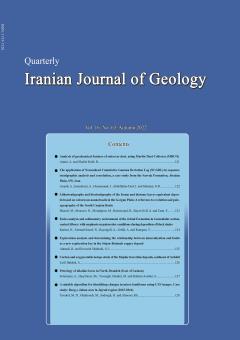-
-
List of Articles
-
Open Access Article
1 - Analysis of geochemical features of sabzevar dust, using Marble Dust Collector (MDCO)
آرش امینی بهنام شفیعی -
Open Access Article
2 - The application of Normalized Cumulative Gamma Deviation Log (NCGDL) in sequence stratigraphic analysis and correlation, a case study from the Sarvak Formation, Abadan Plain, SW, Iran
A. Asaadi A. Imandoust J. Honarmand ایرج عبدالهی فرد O.R. Salmian -
Open Access Article
3 - Lithostratigraphy and biostratigraphy of the foram and diatome layers equivalent deposits based on calcareous nannofossils in the Gorgan Plain: A reference to evolution and paleogeography of the South Caspian Basin
M. Sharafi N. Mousavi M. Moradpour B. Beiranvand A. Bayet-Goll F. Taati -
Open Access Article
4 - Facies analysis and sedimentary environment of the Jeirud Formation in Garmabdar section, central Alborz: with emphasis on paleoredox conditions during deposition of black shales
Nahid Karimi Najmeh Etemad-Saeed Aram Bayet-Goll Afshin Zohdi Tomas Kumpan -
Open Access Article
5 - Exploration analysis and determining the relationship between mineralization and faults as a new exploration key in the Sirjan-Beshneh copper deposit
Reza Ahmadi S.J. Hosseini Shahraki -
Open Access Article
6 - Carbon and oxygen stable isotope study of the Majdar travertine deposits, southeast of Ardabil
َAli Lotfi Bakhsh -
Open Access Article
7 - Petrology of alkaline lavas in North Jirandeh (East of Lushan)
A. Soleimani Sh. Haghnazar M Vosoughi Abedini S. Hakimi Asiabar -
Open Access Article
8 - A suitable algorithm for identifying changes in micro-landforms using UAV images. Case study: Barg-e- Jahan area in Jajrud region (2015-2016)
M.H. Tavakol M. Ghahroudi H. Sadough Kh. Alinoori
-
The rights to this website are owned by the Raimag Press Management System.
Copyright © 2017-2026







